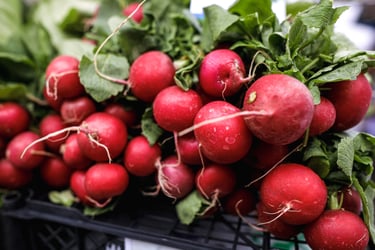eStoreRx™
Online Supplement Dispensary
eStoreRx™ is an easy direct-to-patient ordering & fulfilment program for lifelong wellness.
For over 40 years, Biotics Research Corporation has revolutionized the nutritional supplement industry by utilizing “The Best of Science and Nature”. Combining nature’s principles with scientific ingenuity, our products magnify the nutritional
eStoreRx™ is an easy direct-to-patient ordering & fulfilment program for lifelong wellness.
Biotics Research is proud to expand our commitment to education with the Wellness Unfiltered Pro Podcast. Each episode delves into key health topics and the clinical applications of our premier products. Through candid, insightful conversations, our team offers practical guidance to keep you informed and empowered as a healthcare professional.
April 29 2025
Ketogenic diets (KDs) are increasingly used for purposes far beyond weight loss. Therapeutic carbohydrate restriction is now being employed for mental...
 Move over, tacos. Radishes can liven up so many other meals while providing very few calories and carbohydrates, yet bringing important micronutrients to the table. Let’s showcase this underrated and often overlooked vegetable.
Move over, tacos. Radishes can liven up so many other meals while providing very few calories and carbohydrates, yet bringing important micronutrients to the table. Let’s showcase this underrated and often overlooked vegetable.
Radishes are one of the rare foods that can fit well into a range of different diets, from vegetarian or vegan to low-carb, keto, low-fat, and more. They can be eaten raw or cooked, and cooking tames the peppery bite that might otherwise be off-putting for some people. Cooked radishes are much softer than raw and they have a natural sweetness that’s completely different from their bitterness when eaten raw.
While cauliflower might be the vegetable hogging most of the spotlight as a low-carb substitute for rice, potatoes, and even wraps and tortillas, the humble radish can hold its own on low-carb and keto diets. Pickled radishes have been consumed for centuries and can liven up many dishes, adding a burst of flavor for a nearly negligible amount of carbohydrate. Generously seasoned roasted radishes make an excellent stand-in for home fries or hashbrowns. Radishes that are roasted and then cooled can be used in a mock potato salad – they come very close to looking and tasting like the small, red new potatoes commonly used in potato salads. Or just fry them until brown and call them whatever you like – probably just “delicious!”
Radishes do more than just taste good, though. The roots are good sources of vitamin C, potassium, and fiber, and the leaves are rich in calcium and beta-carotene. That’s right – radish leaves are edible, so if you buy bunches that come with the leaves attached, don’t throw those away! In fact, the leaves outshine the roots where nutrients and antioxidant capacity are concerned. Radish greens can be sauteed like any other leafy green, or even used for a unique kind of pesto. For those who are a bit adventurous in the kitchen and enjoy growing sprouts, radish sprouts pack a nutritional punch, providing quercetin, zeaxanthin, lutein, beta-carotene and other antioxidants.
Radishes belong to the Brassicaceae botanical family, making them cousins of broccoli, cauliflower, turnips, arugula, and cabbage. Like its relatives, radishes owe their bitter pungency to sulfur-containing compounds such as isothiocyanates and their precursors, glucosinolates, which are found exclusively in cruciferous vegetables. Related sulfur compounds, such as sulforaphene, sulforaphane, and indole-3-carbinol, have been researched for chemo-preventive properties and radish extracts have shown promise in in vitro studies for inhibiting proliferation or being cytotoxic in liver, breast, colon, and other cancers. To reap the potential benefits of these compounds, it may be best to slice, chop, or grate radishes – the isothiocyanates are breakdown products that result from the enzymatic hydrolysis of glucosinolates by the enzyme myrosinase, which is present in radishes. (A similar mechanism is at work when allicin, a beneficial bioactive compound in garlic, is created from its precursor, alliin, upon “tissue damage,” typically from chopping or slicing.)
Apart from their potential cancer-fighting compounds, radishes may be beneficial for individuals with type 2 diabetes. They’re very low in carbohydrates, and beyond that, radish extract has been shown to inhibit the activity of α-amylase and α-glucosidase (sugar and starch-digesting enzymes), which could potentially reduce the amount of glucose absorbed into the bloodstream. Isothiocyanates – especially sulforaphane – induce phase II antioxidant enzymes, which may help reduce damage from free radicals. Radish extract may also enhance synthesis of adiponectin, which could potentially improve insulin sensitivity and increase fatty acid oxidation.
The skin of red radishes gets its color from an anthocyanin called pelargonidin, which is also found in strawberries, raspberries, plums, pomegranates, and red geraniums. Anthocyanins may be beneficial in non-alcoholic fatty liver disease, a common comorbidity in type 2 diabetes (as well as a growing epidemic on its own).
As if all that weren’t enough, in the current times of riding food prices, radishes are very budget-friendly, often being among the most inexpensive vegetables in the produce section.
Submit this form and you'll receive our latest news and updates.
*These statements have not been evaluated by the Food and Drug Administration. This product has not intended to diagnose, treat, cure, or prevent any disease.
Proposition 65 Warning
© 2025 Biotics Research Corporation - All Rights Reserved
Submit your comment